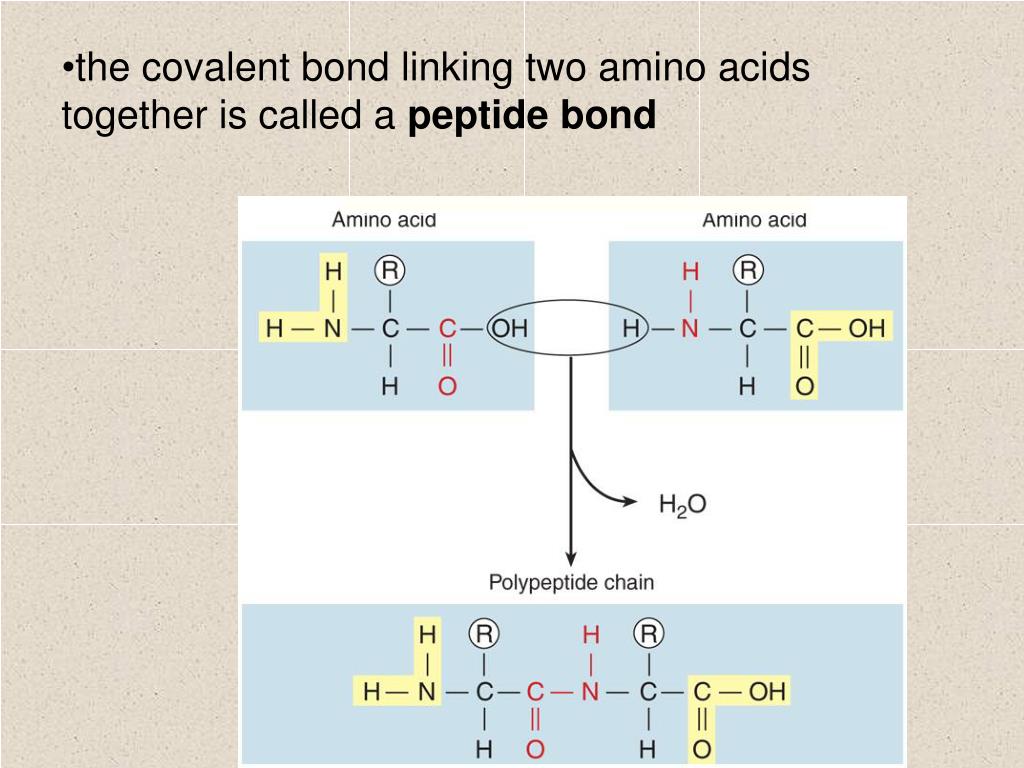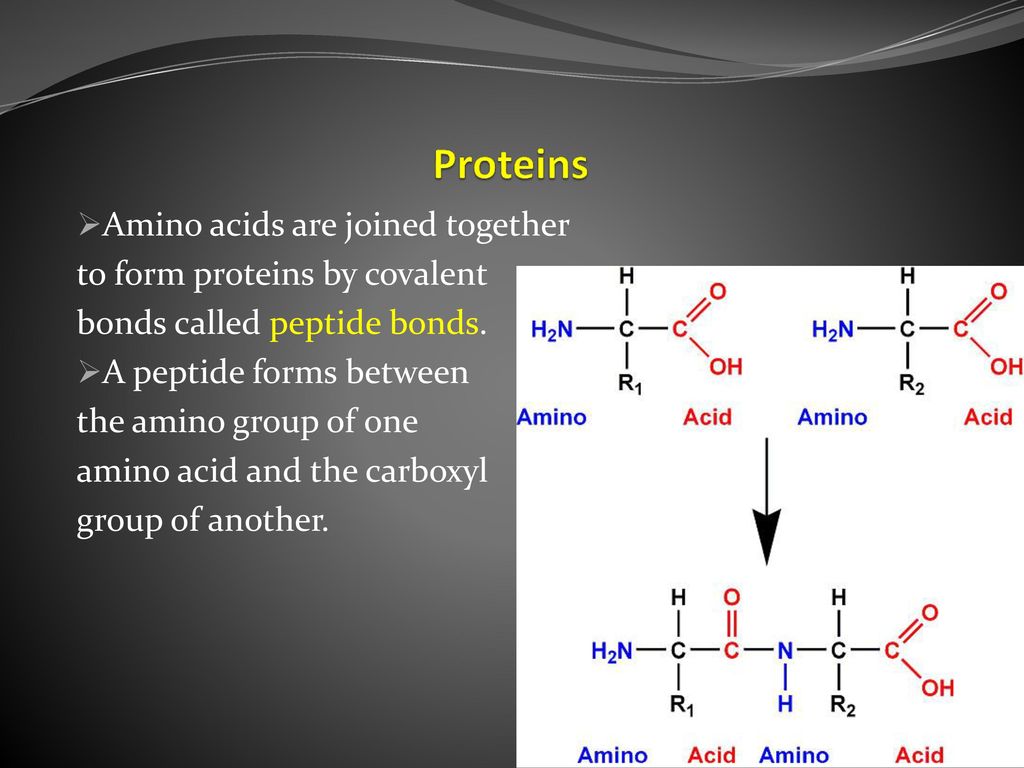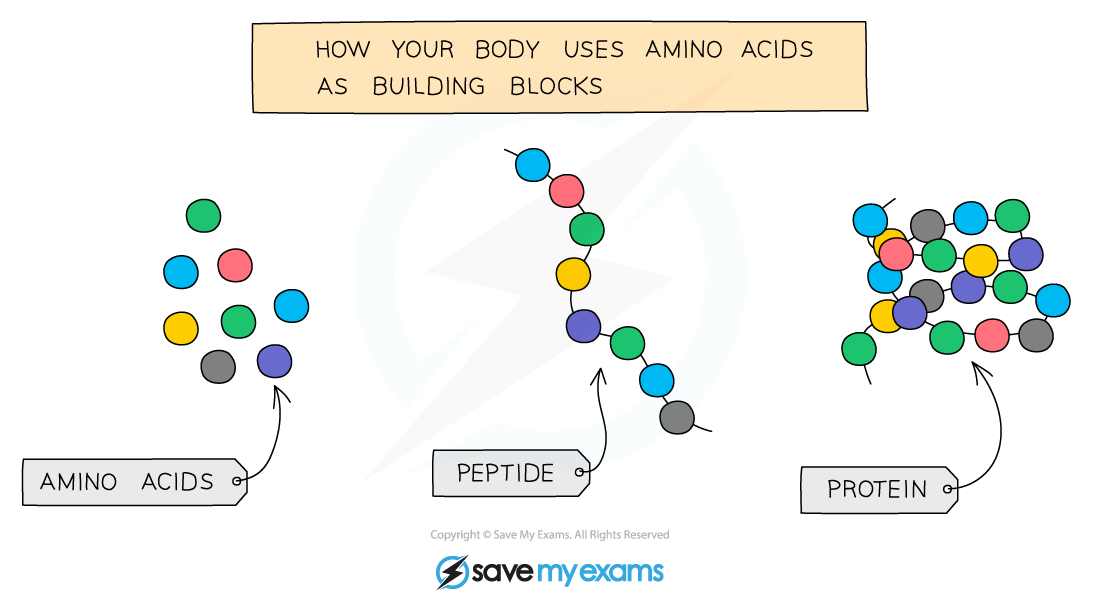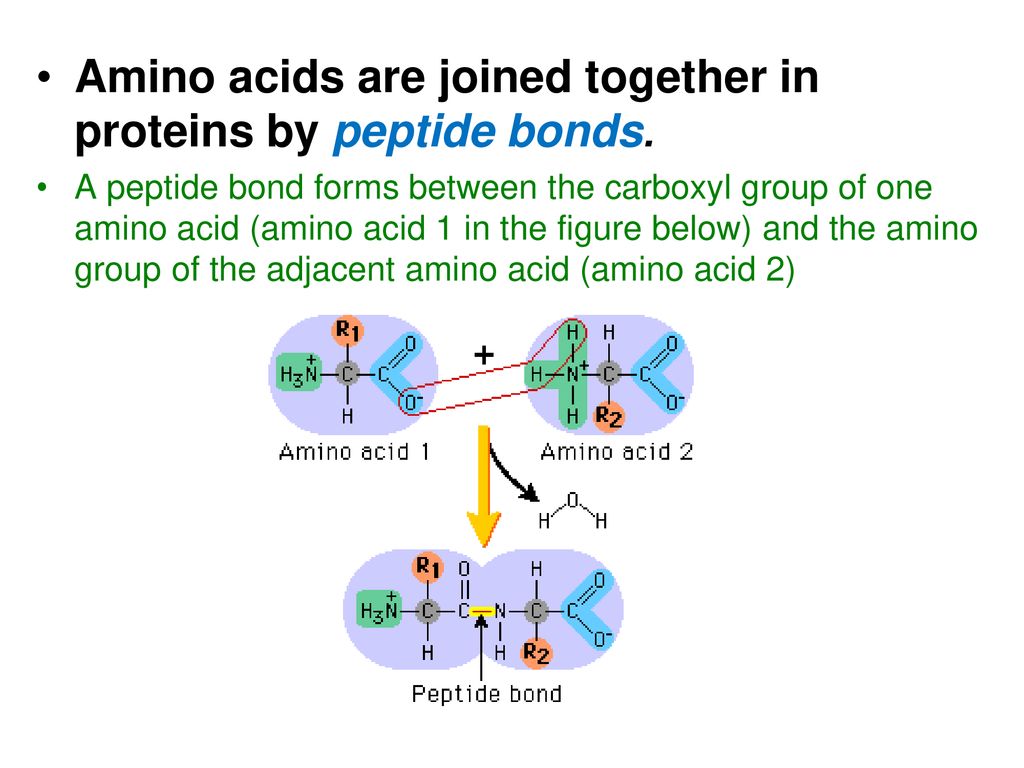Amino Acids Are Joined Together In Order To Form
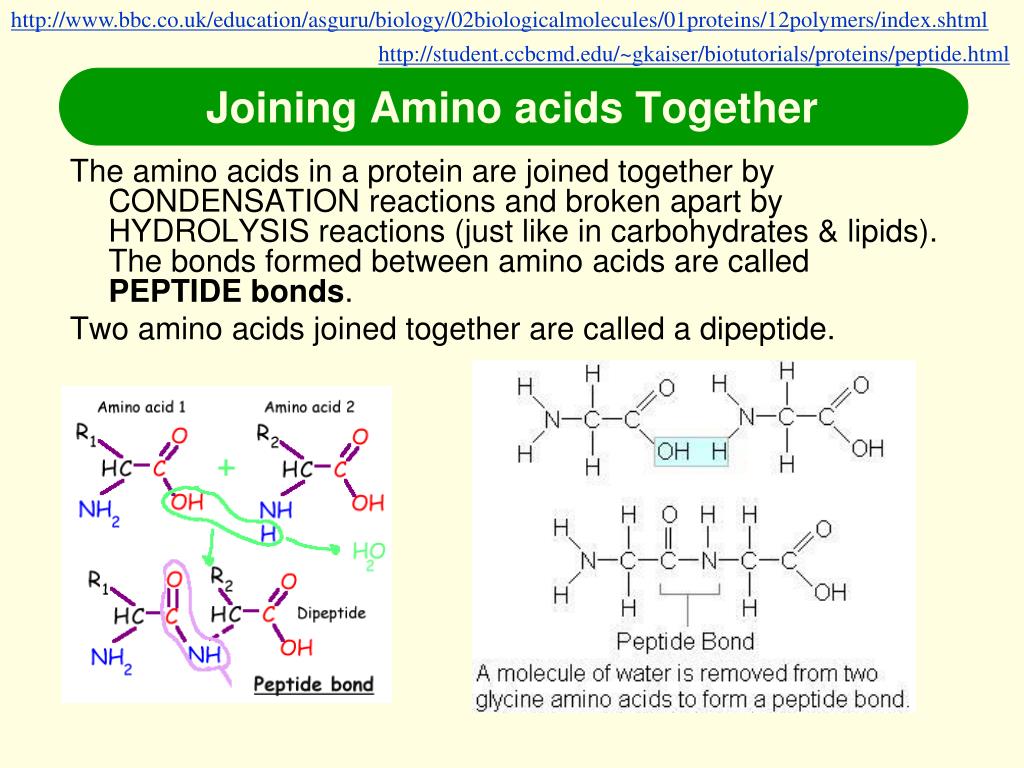
Imagine a string of colorful beads, each unique in shape and hue. These beads aren't for decoration; they're the fundamental building blocks of life, linked together to construct the intricate machinery that powers everything from the flutter of a hummingbird's wings to the complex thoughts swirling in your mind.
At the heart of this biological marvel lies a simple yet profound process: amino acids are joined together to form proteins. This fundamental process is the cornerstone of life as we know it.
The Building Blocks of Life: A Closer Look at Amino Acids
Amino acids are organic compounds that contain both amino (-NH2) and carboxyl (-COOH) functional groups, along with a side chain (R group) specific to each amino acid. These side chains determine the unique properties of each amino acid, influencing how it interacts with other molecules and contributes to the overall structure and function of a protein. There are 20 standard amino acids commonly found in proteins, each playing a crucial role.
Think of these 20 amino acids as the alphabet of life. Just like the 26 letters in the English alphabet can be combined to form countless words, these 20 amino acids can be linked together in various sequences to create an enormous diversity of proteins. Each protein has a specific job to do, from catalyzing biochemical reactions to transporting oxygen in the blood.
The Peptide Bond: Linking Amino Acids Together
The process of joining amino acids together is called peptide bond formation. This process occurs through a dehydration reaction, where a water molecule (H2O) is removed between the carboxyl group of one amino acid and the amino group of another.
This covalent bond, the peptide bond, is remarkably strong, providing stability to the growing chain of amino acids. This chain of amino acids linked by peptide bonds is called a polypeptide.
The sequence of amino acids in a polypeptide chain is dictated by the genetic code, which is stored in DNA. This code serves as a blueprint, ensuring that the correct amino acids are assembled in the correct order to create a functional protein.
From Polypeptide to Protein: Folding and Function
A polypeptide chain is not yet a functional protein. To become a protein, the polypeptide chain must fold into a specific three-dimensional structure. This folding process is driven by various interactions between the amino acid side chains, including hydrogen bonds, electrostatic interactions, and hydrophobic interactions.
The final three-dimensional structure of a protein is crucial for its function. A protein's shape determines which molecules it can bind to and how it can interact with other proteins. Misfolded proteins can lose their function or even become toxic, leading to various diseases.
Imagine a key fitting into a lock. The lock represents an enzyme, a protein that speeds up biochemical reactions, and the key represents the substrate, the molecule the enzyme acts upon. The enzyme's active site, the region where the substrate binds, has a specific shape that complements the substrate's shape, allowing the enzyme to catalyze the reaction. If the enzyme were misfolded, the active site might be distorted, preventing the substrate from binding and rendering the enzyme inactive.
The Central Dogma: DNA to Protein
The process of protein synthesis is a central tenet of molecular biology, often referred to as the central dogma. This dogma describes the flow of genetic information from DNA to RNA to protein.
First, the genetic information stored in DNA is transcribed into a messenger RNA (mRNA) molecule. The mRNA molecule then travels from the nucleus to the ribosome, a cellular machine responsible for protein synthesis.
At the ribosome, the mRNA sequence is translated into a sequence of amino acids. Transfer RNA (tRNA) molecules, each carrying a specific amino acid, recognize and bind to specific codons (three-nucleotide sequences) on the mRNA. The ribosome then catalyzes the formation of peptide bonds between the amino acids, creating a growing polypeptide chain.
The Ribosome: A Molecular Factory
The ribosome is a complex molecular machine composed of ribosomal RNA (rRNA) and proteins. It serves as the site of protein synthesis in all living cells. The ribosome's structure and function have been extensively studied, revealing its intricate mechanism for translating mRNA into protein.
According to research published in Nature, the ribosome's catalytic activity is primarily carried out by rRNA, highlighting the importance of RNA in fundamental biological processes. "The ribosome is a remarkable example of how RNA can act as both a structural scaffold and a catalytic enzyme," stated Dr. Joan Steitz, a renowned RNA researcher at Yale University.
The ribosome's ability to synthesize proteins with high fidelity and efficiency is essential for cell survival. Errors in protein synthesis can lead to the production of non-functional or even harmful proteins, disrupting cellular processes and potentially causing disease.
The Significance of Protein Synthesis
Protein synthesis is a fundamental process that is essential for all life. Proteins play a vast array of roles in the cell, including catalyzing biochemical reactions, transporting molecules, providing structural support, and regulating gene expression.
Without protein synthesis, cells would be unable to function, grow, or reproduce. Understanding the mechanisms of protein synthesis is crucial for understanding the fundamental processes of life and for developing new therapies for diseases.
Disruptions in protein synthesis are implicated in a variety of diseases, including cancer, neurodegenerative disorders, and infectious diseases. Targeting protein synthesis pathways is a promising strategy for developing new drugs to treat these diseases. For example, some antibiotics work by inhibiting bacterial protein synthesis, preventing bacteria from growing and multiplying.
Looking Ahead: Future Directions in Protein Synthesis Research
Research on protein synthesis continues to advance, revealing new insights into the intricate mechanisms that govern this essential process. Scientists are exploring how protein synthesis is regulated in different cell types and under different conditions. They are also investigating how errors in protein synthesis can lead to disease.
Advances in technologies such as cryo-electron microscopy are providing unprecedented views of the ribosome and other components of the protein synthesis machinery. These detailed structural insights are helping scientists to understand how these molecules work at the atomic level.
Ultimately, a deeper understanding of protein synthesis will lead to new strategies for preventing and treating diseases, as well as for engineering new proteins with novel functions. The possibilities are endless, driven by the fundamental understanding of how amino acids are joined together to form the proteins that define life itself.

